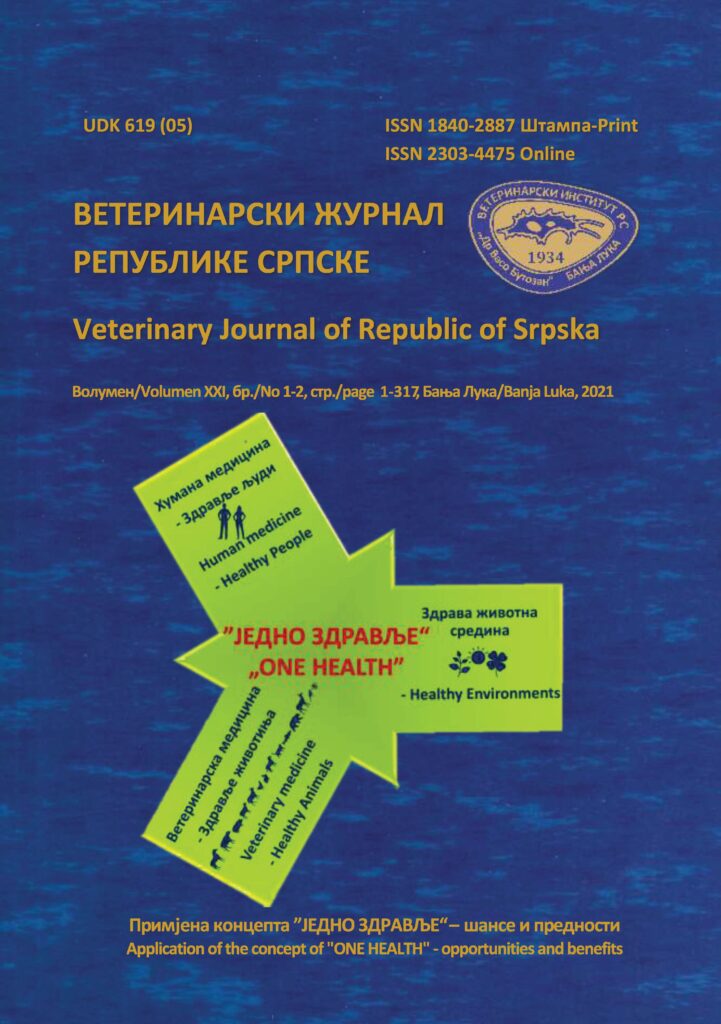BACTERIAL, FUNGAL AND VIRAL ZOONOSES OF PETS
DOI:
https://doi.org/10.7251/VETJEN2101094RAbstract
Today, pets are the source of numerous infectious diseases that can be transmitted to humans, as a result of their increasingly frequent contact. The most important viruses with zoonotic potential include rabies and influenza viruses as well as rotaviruses and noroviruses. However, the importance of individual viruses varies depending on the climate and infectious disease control systems in certain countries. Dogs, cats, and other increasingly popular types of pets can transmit bacterial zoonotic agents to humans in various ways. In addition to known pathogens such as the bacteria causing leptospirosis, salmonellosis, campylobacteriosis, or brucellosis, the bacteria Pasteurella multocida and Bartonella henselae transmitted by bites or scratches are also significant in human pathology. There has been a significant increase in the prevalence of methicillin-resistant strains of Staphylococcus aureus in isolates originating from pets and the transmission of these strains between humans and animals requires special attention. Furthermore, fungi causing diseases such as sporotrichosis or dermatophytosis are linked to long-term and persistent infections in humans. The epidemiological situation caused by SARS-CoV-2, and the assumption of an interspecies jump of this virus from animals to humans, including its documented presence in domestic cats, dogs, tigers, and martens, have raised the question of the possibility of virus transmission from pets to humans. However, the current pandemic is caused exclusively by SARS-CoV-2 transmission in the human population, and these animals are not a source of infection for humans. A significant number of zoonoses originating from pets is a threat to public health, thus requiring the "One Health" approach through close cooperation between human and veterinary medicine to develop and implement effective health measures for both humans and animals. As part of responsible ownership, pet owners must be informed by veterinarians about measures to prevent infectious diseases and certain risks that are related to keeping certain species of animals.

